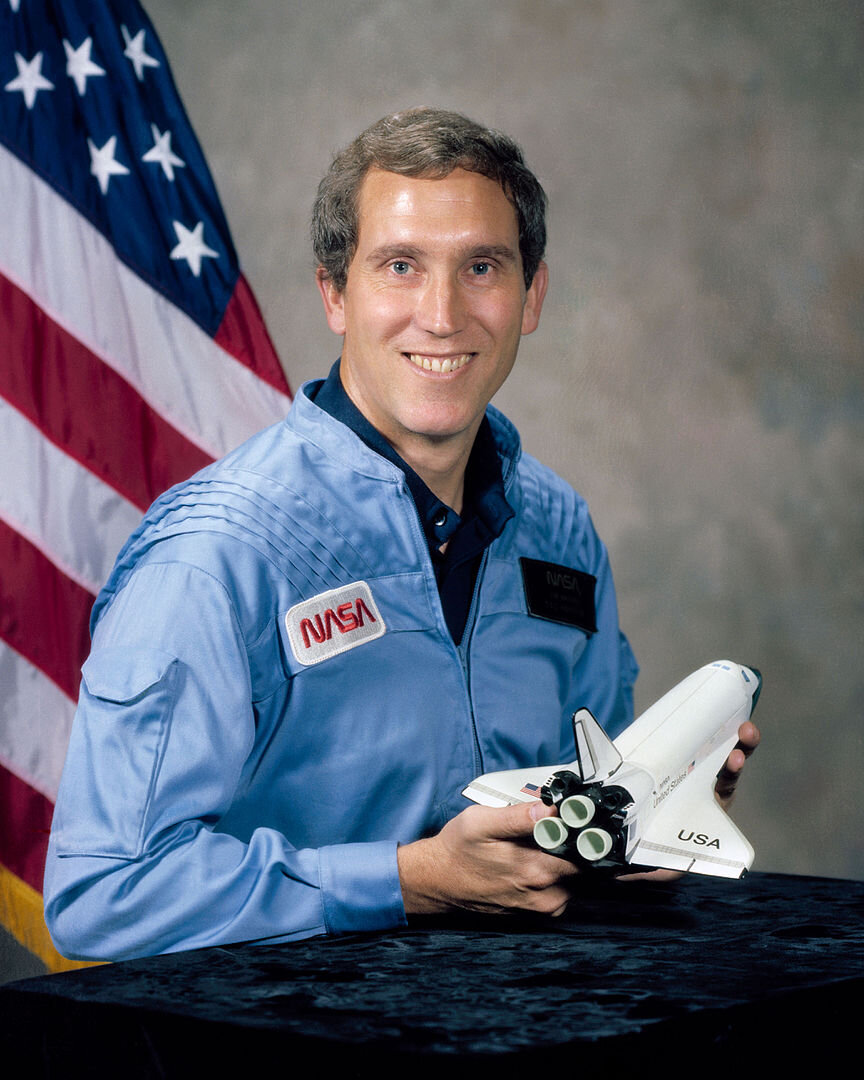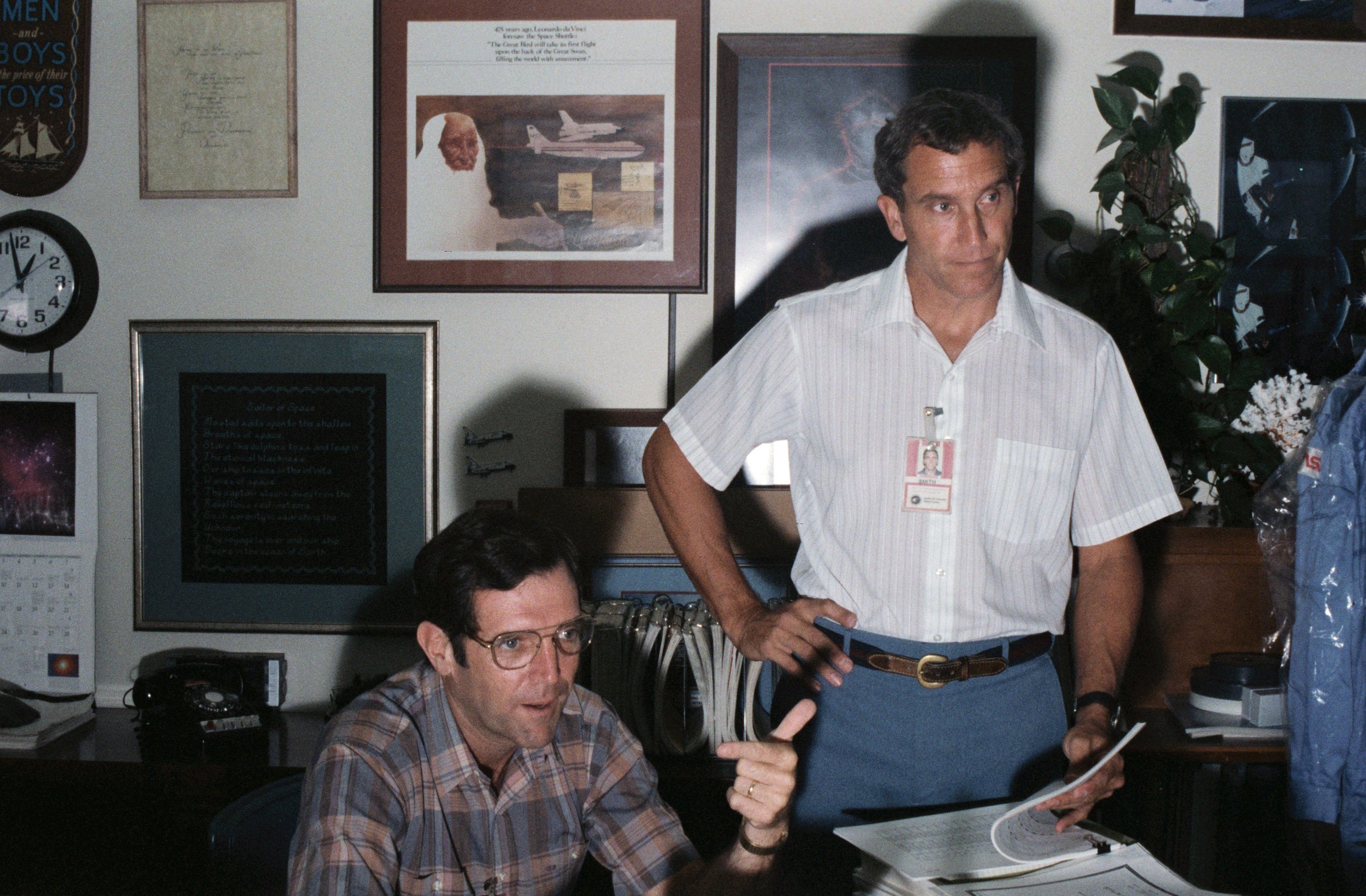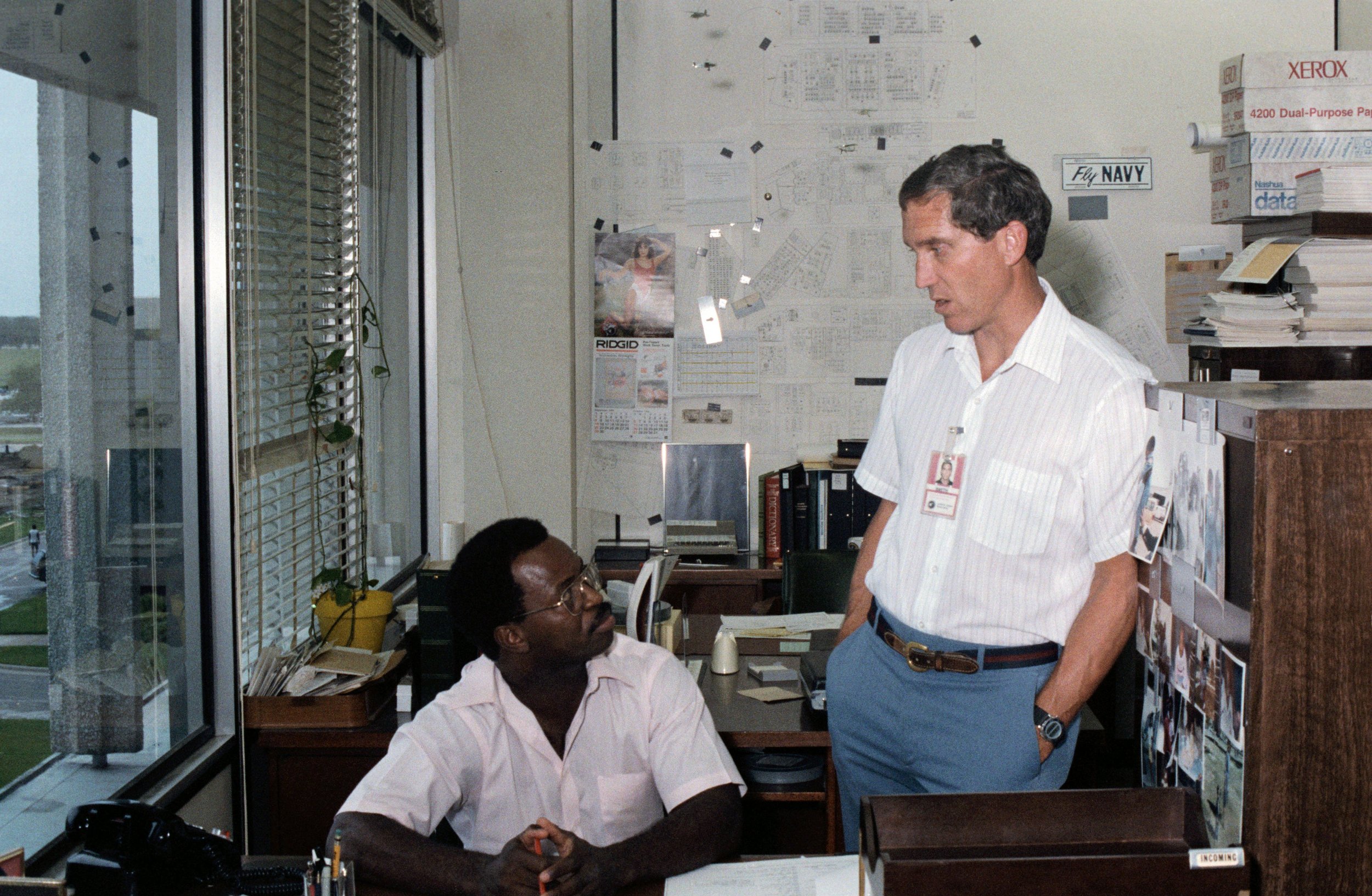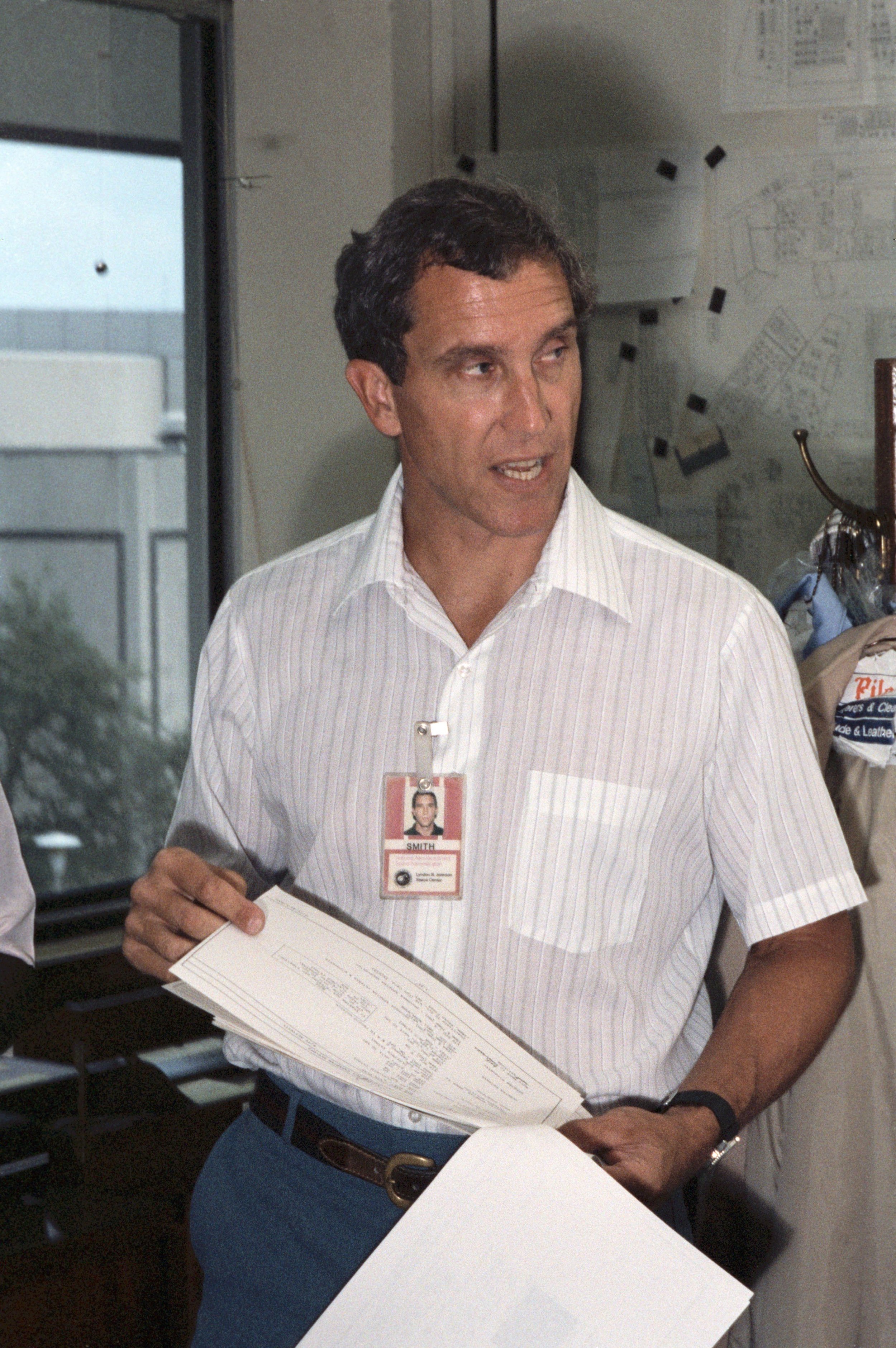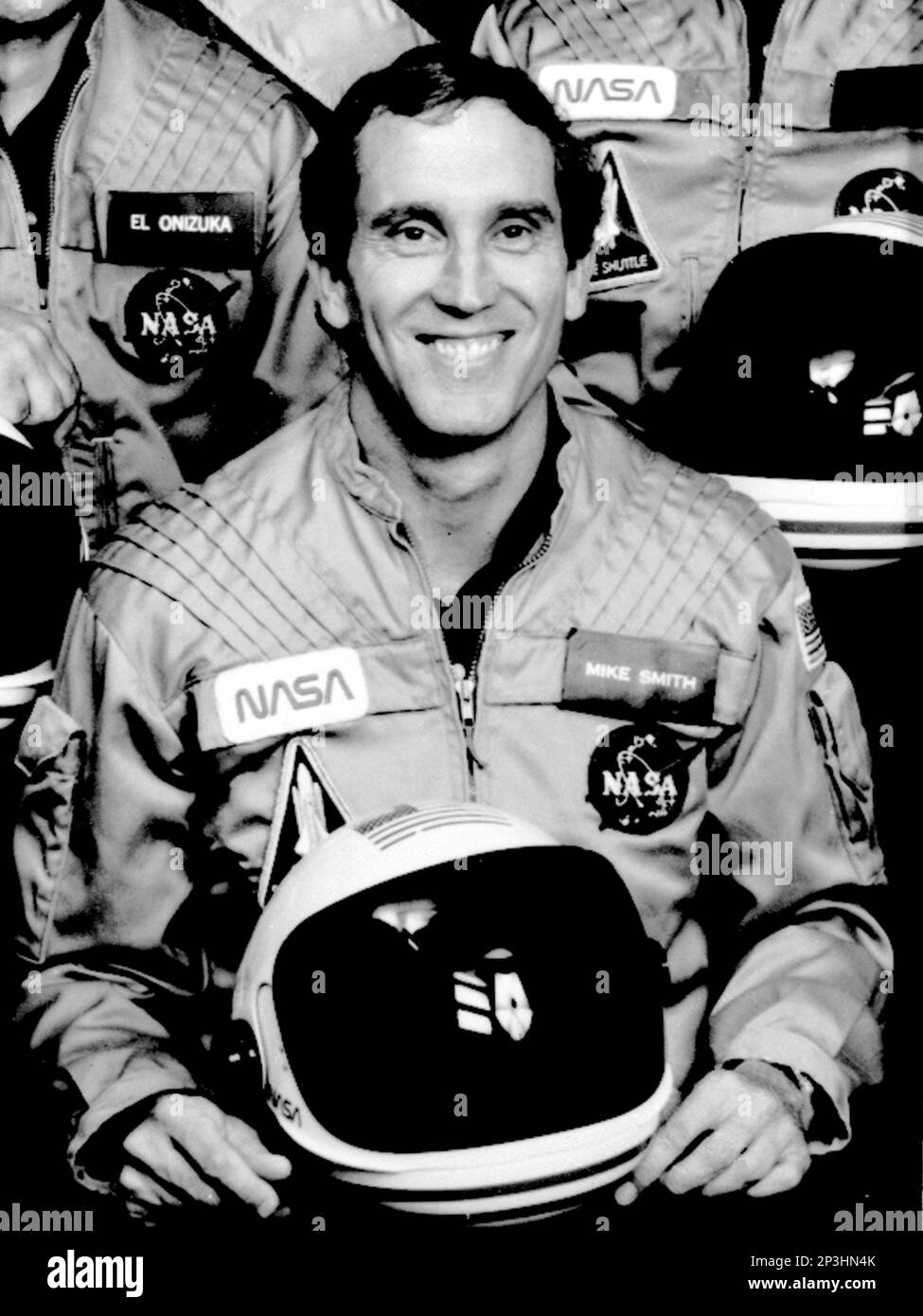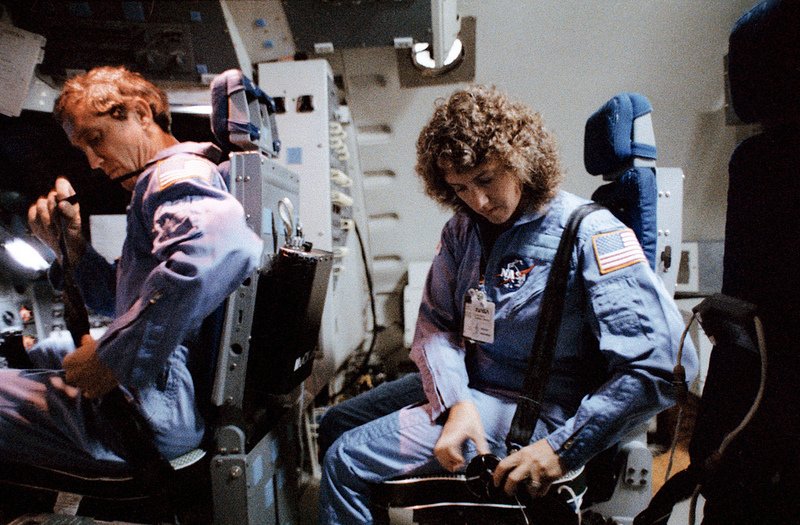Michael J. Smith
Early life and military career
Smith was born April 30, 1945, in Beaufort, North Carolina. He graduated from East Carteret High School in 1963 and went on to receive a Bachelor of Science degree in Naval Science from the United States Naval Academy in 1967. Smith subsequently attended the U.S. Naval Postgraduate School at Monterey, California, from which he graduated with a Master of Science degree in Aeronautical Engineering in 1968. Smith was awarded a Marshall Scholarship and went on to complete naval aviation jet training at Naval Air Station Kingsville, Texas, receiving his aviator wings in May 1969. He was then assigned to the Advanced Jet Training Command (VT-21) where he served as an instructor from May 1969 to March 1971. During the two-year period that followed, Smith flew A-6 Intruders and completed a tour in 1972 during the Vietnam War while assigned to Attack Squadron 52 (VA-52) aboard the aircraft carrier USS Kitty Hawk. During his deployment with VA-52, Smith took part in Operation Linebacker, the first continuous bombing effort conducted against North Vietnam since 1968.
After returning from Vietnam, Smith attended U.S. Naval Test Pilot School (NTPS), graduating from the program in 1974. Following NTPS, he was assigned to the Strike Aircraft Test Directorate at NAS Patuxent River, Maryland, to work on the A-6E TRAM and Cruise missile guidance systems. Smith returned to NTPS in 1976 and completed an 18-month assignment there as an instructor. From Patuxent River, he was assigned to Attack Squadron 75 (VA-75), serving as a maintenance and operations officer while completing two Mediterranean cruises aboard the aircraft carrier USS Saratoga.
During his time in the navy, Smith flew 28 different types of civilian and military aircraft, cumulating in 4,867.7 hours of flying time.[4]
Astronaut career
Smith was selected for the astronaut program in May 1980; he served as a commander in the Shuttle Avionics Integration Laboratory (SAIL), Deputy Chief of Aircraft Operations Division, Technical Assistant to the Director, Flight Operations Directorate, and was also assigned to the Astronaut Office Development and Test Group. In addition to being pilot on the Challenger, Smith had been slated to pilot a future Shuttle mission (STS-61-I) which had been scheduled for the Fall of 1986.[5] Smith's voice was the last one heard on the flight deck tape recorder aboard Challenger; his final remark was "Uh oh."[3]
Following the Challenger disaster, examination of the recovered vehicle cockpit revealed that three of the crew members' Personal Egress Air Packs were activated: those of Smith, mission specialist Judith Resnik, and mission specialist Ellison Onizuka. The location of Smith's activation switch, on the back side of his seat, means that either Resnik or Onizuka could have activated it for him. This is the only evidence available from the disaster that shows Onizuka and Resnik were alive after the cockpit separated from the vehicle. However, if the cabin had lost pressure, the packs alone would not have sustained the crew during the two-minute descent.
While analyzing the wreckage, investigators discovered that several electrical system switches on Smith's right-hand panel had been moved from their usual launch positions. Fellow Astronaut Richard Mullane wrote, "These switches were protected with lever locks that required them to be pulled outward against a spring force before they could be moved to a new position." Later tests established that neither the force of the explosion, nor the impact with the ocean could have moved them indicating that he made the switch changes, presumably in an attempt to restore electrical power to the cockpit after the crew cabin detached from the rest of the orbiter.[6]
Recognition
Smith was posthumously awarded the Congressional Space Medal of Honor in 2004, along with all crew members lost in the Challenger and Columbia accidents.[7] He also received the Defense Distinguished Service Medal (posthumous), the Navy Distinguished Flying Cross, 3 Air Medals, 13 Strike/Flight Air Medals, the Navy Commendation Medal with "V" Device, the Navy Unit Citation, and the Vietnam Cross of Gallantry with Silver Star.
The Michael J. Smith Field airfield in his home town of Beaufort, North Carolina is named after Smith.
Smith was portrayed by Brian Kerwin in the 1990 TV movie Challenger.
Michael J. Smith served in Vietnam as a pilot in an attack squadron aboard the U.S.S. Kitty Hawk. Subsequently he became a Navy test pilot and was selected as an astronaut in 1980.
Captain Smith served as the pilot of space shuttle Challenger STS 51-L, which broke apart one minute and 13 seconds after its launch.
He was promoted posthumously to the rank of Navy Captain and had a chair named in his honor at the U.S. Navy Postgraduate School.
Michael J. Smith made the ultimate sacrifice and lost his life in service to the nation and the space program on January 28, 1986 at 40 years of age.
About Space Shuttle Challenger
Space Shuttle Challenger (OV-099) was a Space Shuttle orbiter manufactured by Rockwell International and operated by NASA. Named after the commanding ship of a nineteenth-century scientific expedition that traveled the world, Challenger was the second Space Shuttle orbiter to fly into space after Columbia, and launched on its maiden flight in April 1983. It was destroyed in January 1986 soon after launch in an accident that killed all seven crewmembers aboard. Initially manufactured as a test article not intended for spaceflight, it was utilized for ground testing of the Space Shuttle orbiter's structural design. However, after NASA found that their original plan to upgrade Enterprise for spaceflight would be more expensive than upgrading Challenger, the orbiter was pressed into operational service in the Space Shuttle program. Lessons learned from the first orbital flights of Columbia led to Challenger's design possessing fewer thermal protection system tiles and a lighter fuselage and wings. This led to it being 1,000 kilograms (2,200 pounds) lighter than Columbia, though still 2,600 kilograms (5,700 pounds) heavier than Discovery.
During its three years of operation, Challenger was flown on ten missions in the Space Shuttle program, spending over 62 days in space and completing almost 1,000 orbits around Earth. Following its maiden flight, Challenger supplanted Columbia as the leader of the Space Shuttle fleet, being the most-flown orbiter during all three years of its operation while Columbia itself was seldom used during the same time frame. Challenger was used for numerous civilian satellite launches, such as the first tracking and data relay satellite, the Palapa B communications satellites, the Long Duration Exposure Facility, and the Earth Radiation Budget Satellite. It was also used as a test bed for the Manned Maneuvering Unit (MMU) and served as the platform to repair the malfunctioning SolarMax telescope. In addition, three consecutive Spacelab missions were conducted with the orbiter in 1985, one of which being the first German crewed spaceflight mission. Passengers carried into orbit by Challenger include the first American female astronaut, the first American female spacewalker, the first African-American astronaut, and the first Canadian astronaut.

